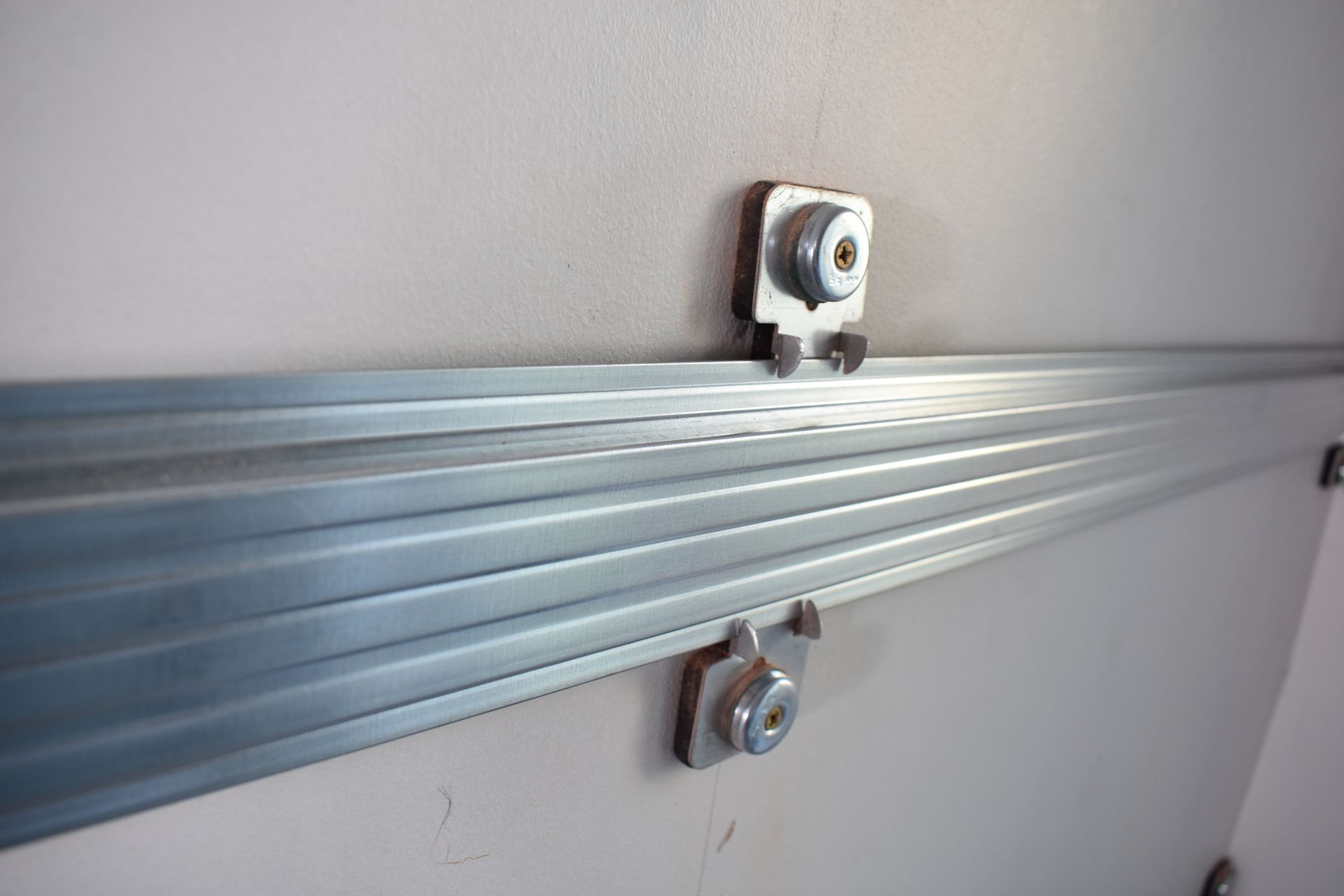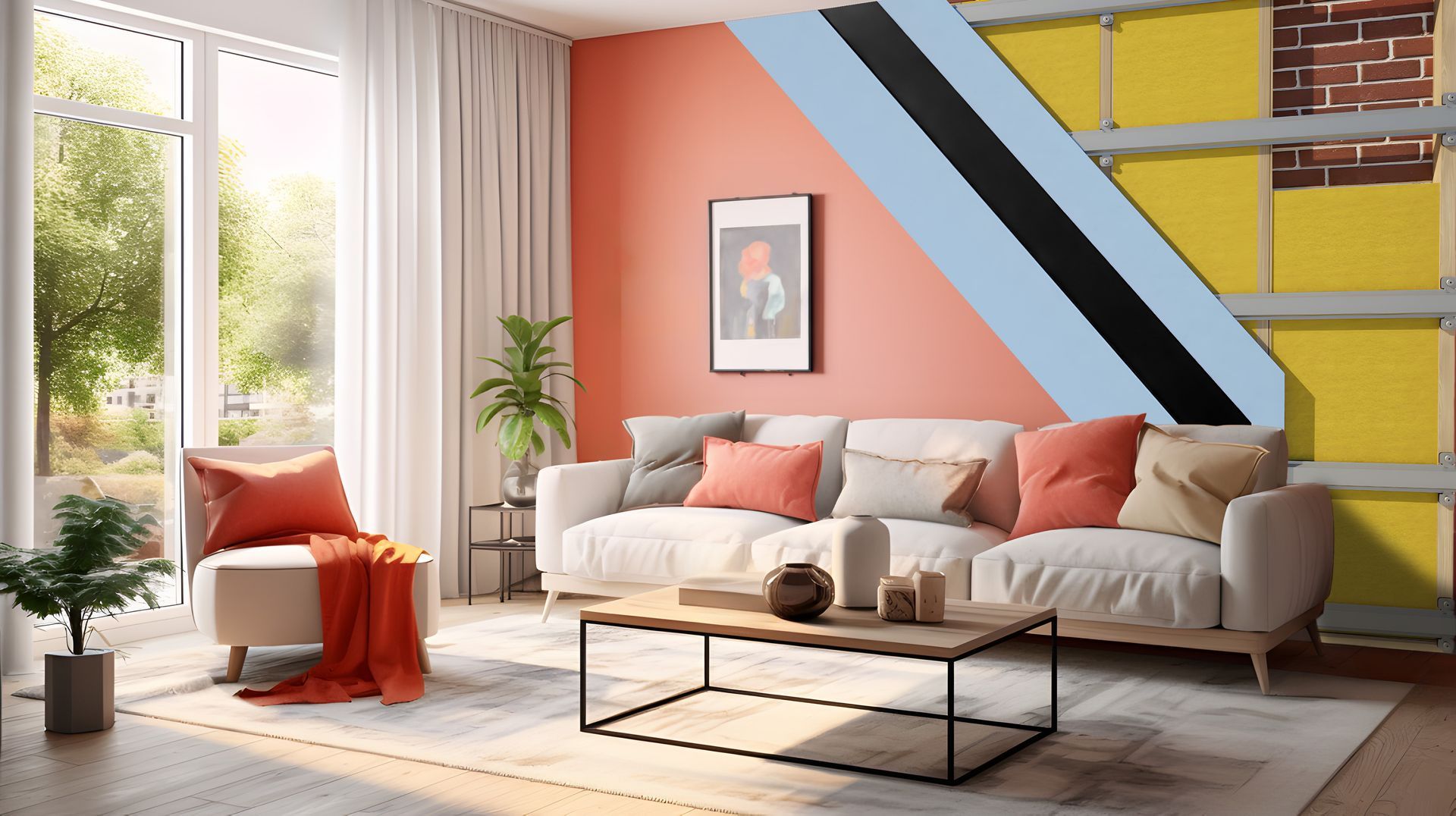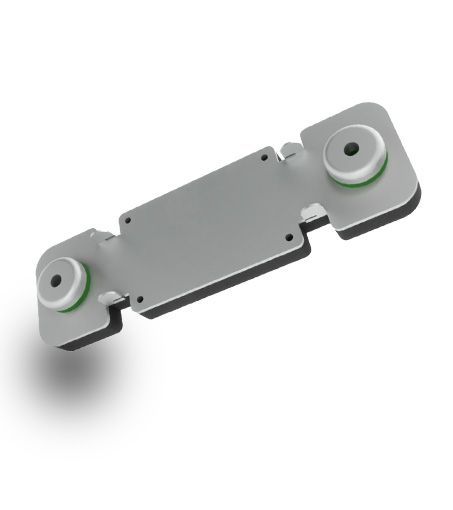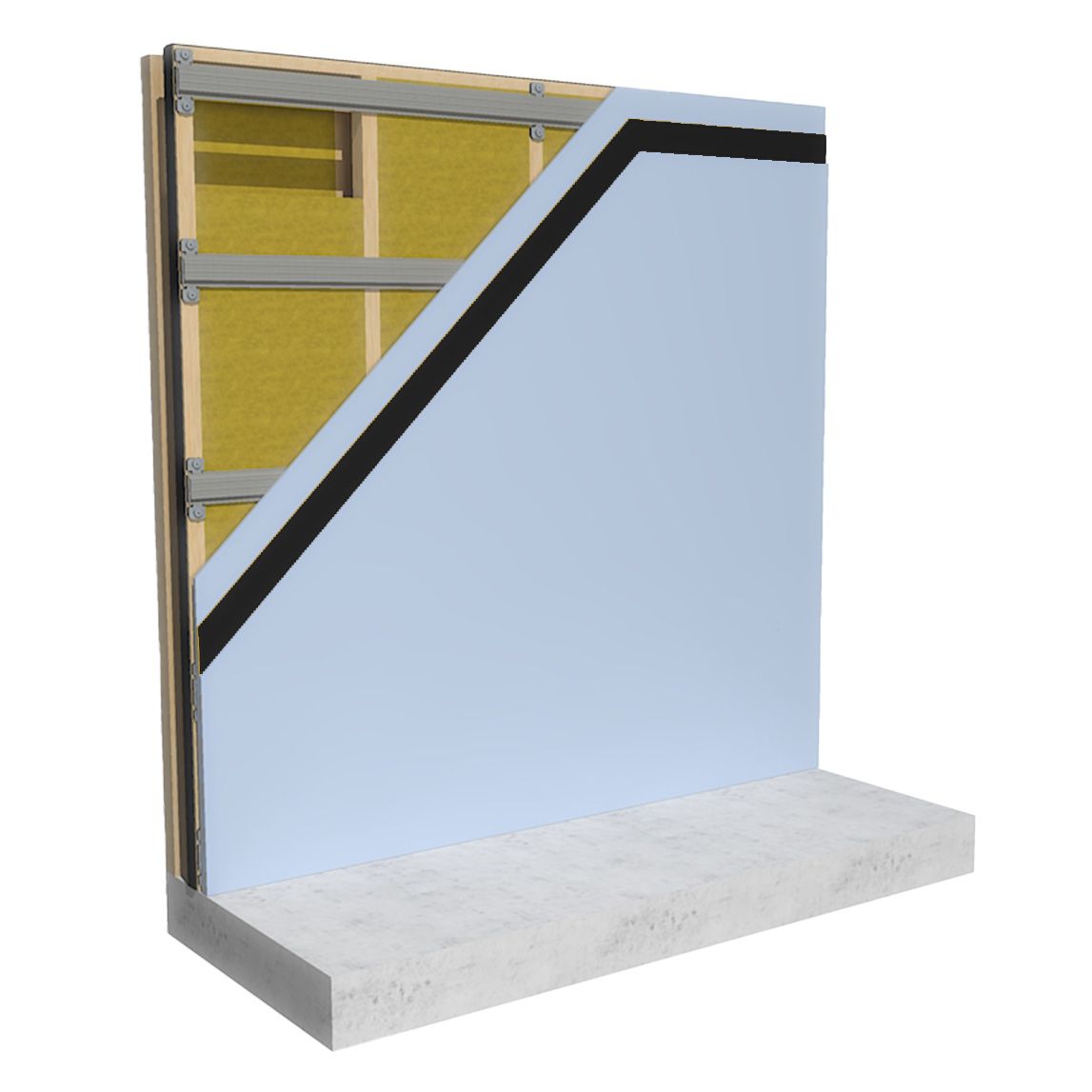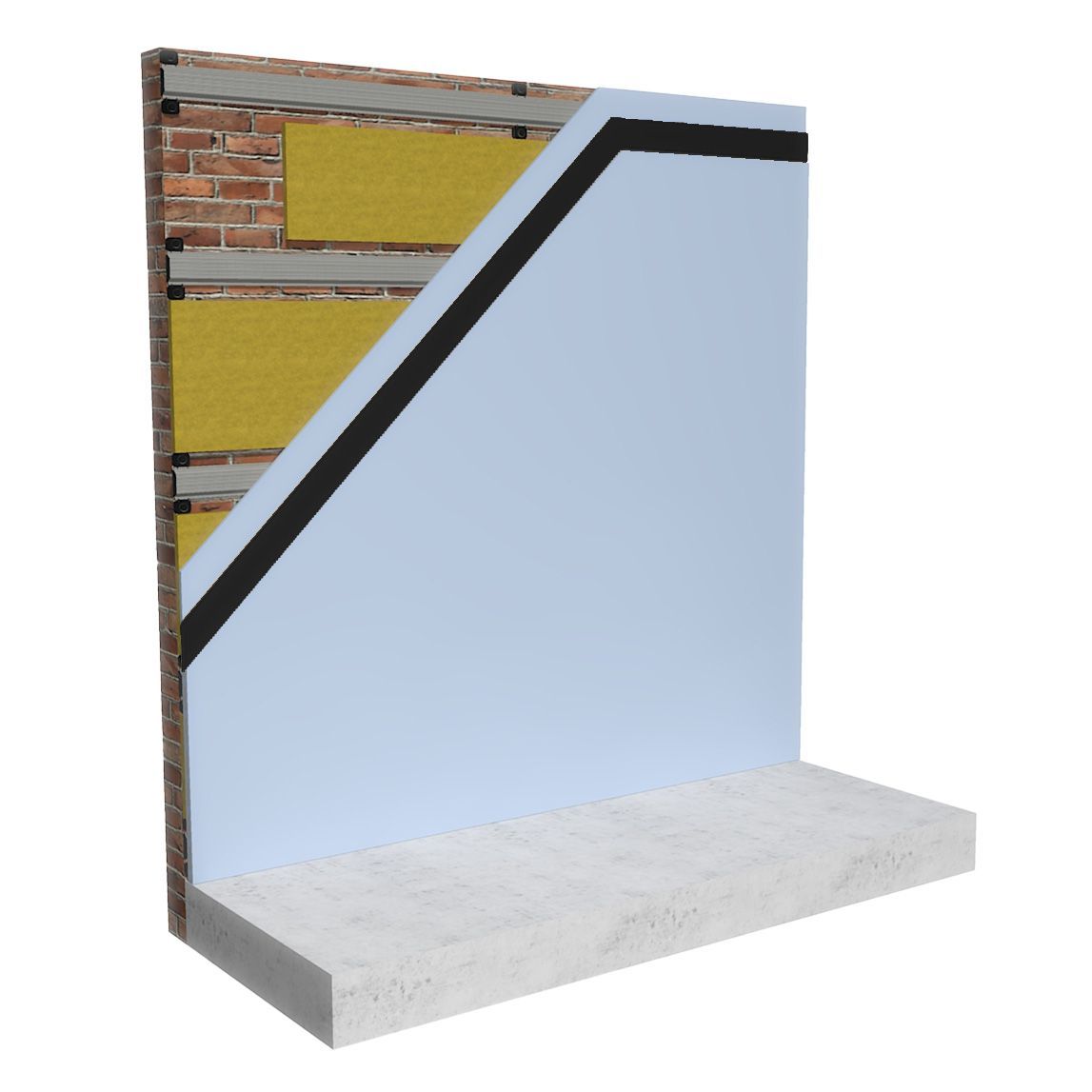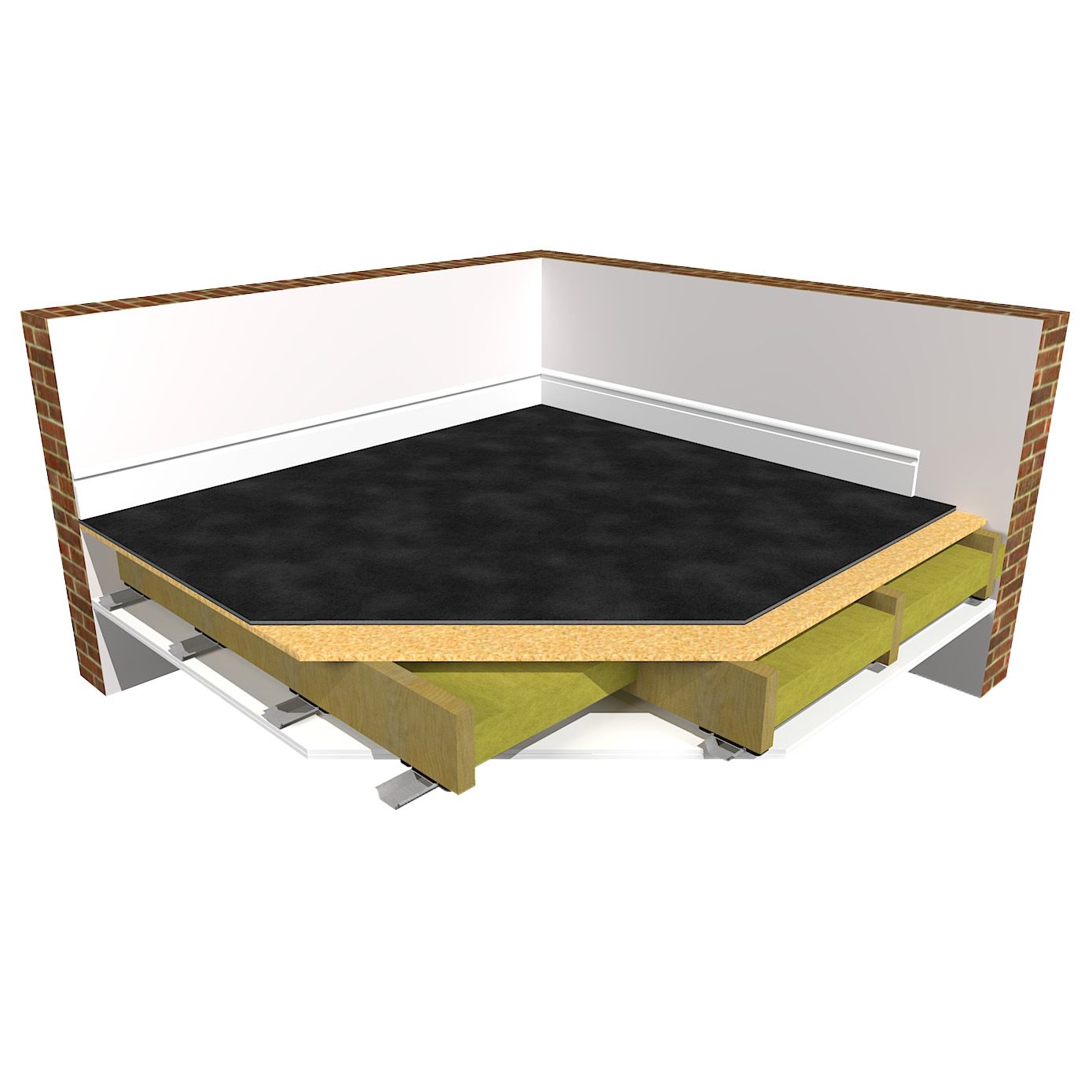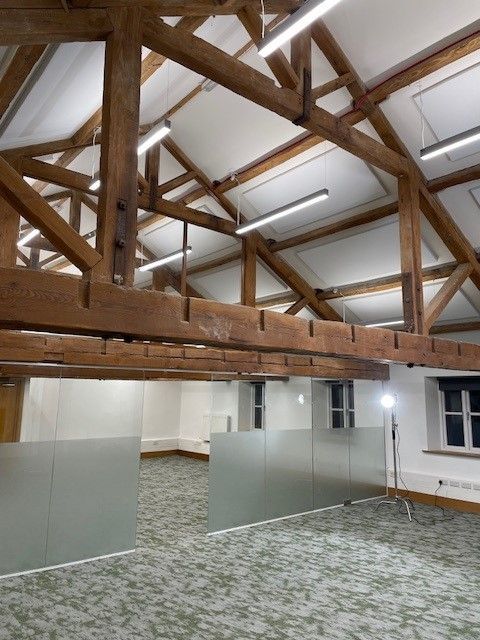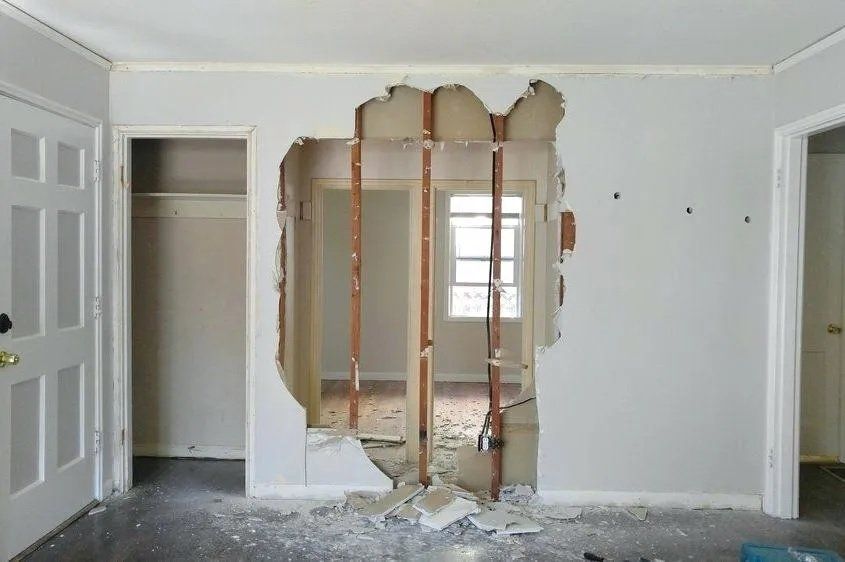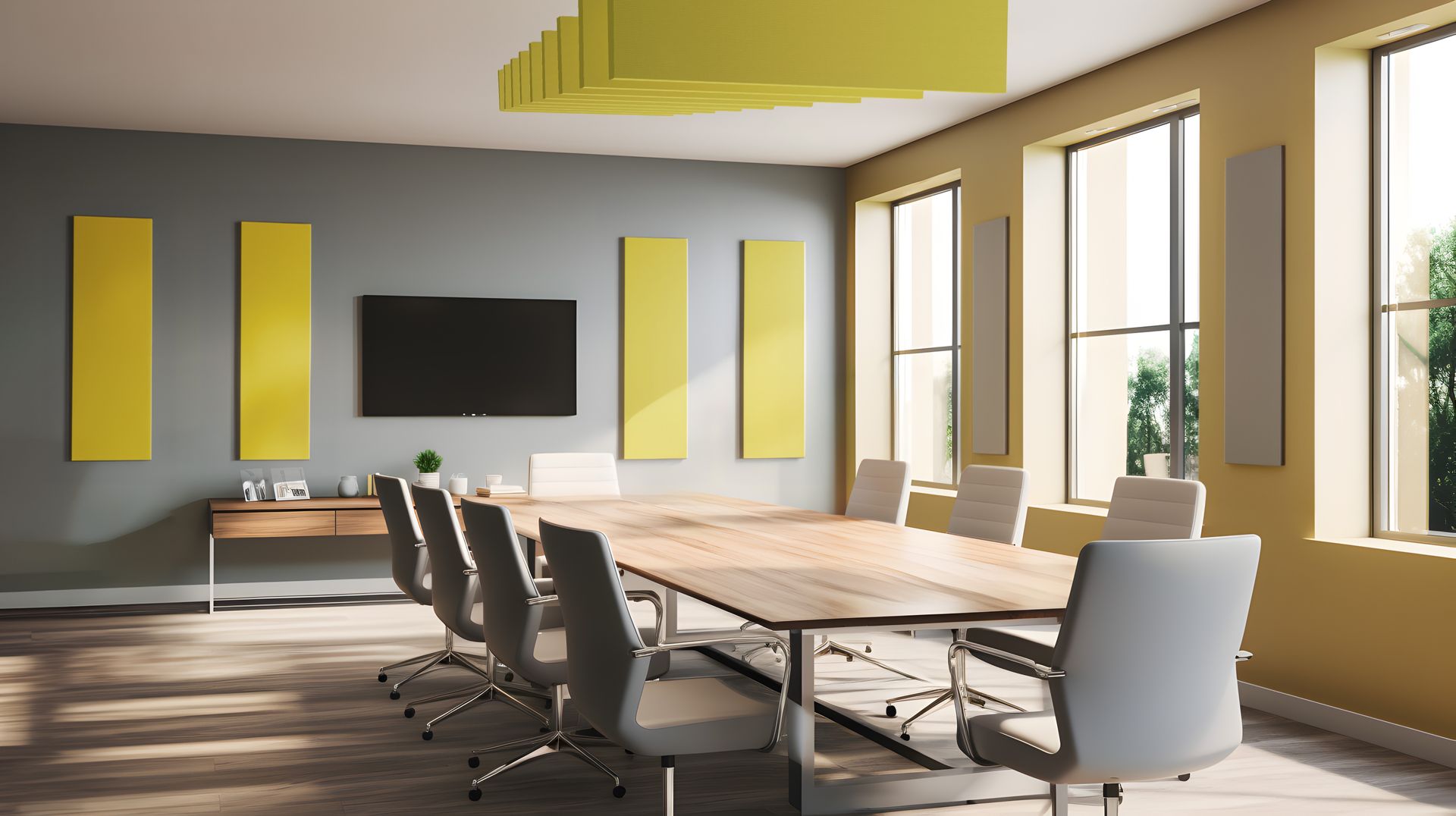Choosing the right sound insulation for your home
Living with noisy neighbours can be frustrating, whether it’s loud music, late-night parties, or the constant thudding of footsteps. Sound travels easily through walls, especially in older or poorly insulated properties, making it difficult to find peace and quiet in your own home. Thankfully, wall sound insulation can make a significant difference in reducing noise and improving your quality of life.
In this comprehensive guide, we’ll cover everything you need to know about soundproofing walls - from understanding how sound travels to the best materials and methods to block out noise effectively.
What is the difference between sound insulation and soundproofing
Often sound insulation and soundproofing are interchangeable terms. Soundproofing refers to the process of blocking or preventing sound from entering or leaving a space. e.g. when soundproofing a wall, the aim is to eliminate the transfer of sound from one room to the other. Sound insulation for the purpose of this article refers to the materials and methods used to reduce the amount of sound that travels through a wall.
Acoustic insulation is another frequently used term and in relation to soundproofing, relates to Acoustic Mineral Wool and its use to absorb sound within wall, floor and ceiling cavities. It is not a soundproofing solution in its own right.
Acoustic Mineral Wool And Its Use In Soundproofing
Benefits of Sound Insulation for Noisy Neighbours
Wall sound insulation is an effective solution for reducing unwanted noise from adjoining properties, especially in semi-detached or terraced homes. Key benefits include:
- Blocks Neighbour Noise: Reduces sounds like talking, TV, music, or footsteps coming through shared or party walls.
- Improves Peace and Quiet: Creates a more comfortable and relaxing home environment by cutting out everyday disturbances.
- Boosts Privacy: Prevents your own sounds from travelling next door, allowing everyone to enjoy their home without disruption.
- Enhances Sleep and Wellbeing: A quieter home supports better sleep quality and improved wellbeing.
- DIY Non-Invasive Options Available: Modern soundproofing systems can be installed without major construction, suitable for DIY or retrofitting.
Wall sound insulation typically involves clip and bar systems like the ReductoClip System, designed to block airborne sound and reduce vibrations. Direct to wall soundproof boards, like the SoundBoard 4 are also an excellent sound insulation solution for low mass walls, e.g. internal stud walls.
How Sound Travels Through Walls
To effectively soundproof your walls with acoustic insulation solutions, it’s important to understand how sound travels. Sound is essentially a vibration that moves through the air and through solid structures. It can enter your home in two (primary) ways:
1. Airborne Noise
- Airborne noise is sound that travels through the air and passes through walls, ceilings, and floors.
- Examples: Voices, music, TV noise.
2. Impact Noise (Structure-Borne Noise)
- Impact noise is created when an object comes into contact with a surface, causing vibrations that travel through the structure of a building.
- Examples: Footsteps, furniture being moved, doors slamming, drilling, or hammering.
Key Principles of Sound Insulation
Successful wall sound insulation involves addressing the following three key principles:
1. Mass
- Adding mass to a wall helps reduce sound transmission by making it more difficult for sound waves to pass through.
- High-density materials such as mass-loaded vinyl (MLV), FlexiSound and Acoustic Plasterboard are effective options.
2. Damping
- Damping materials help to absorb sound energy and reduce vibrations.
- Products like ReductoClips, FlexiSound and Closed Cell Foam are designed for this purpose.
3. Decoupling
- Decoupling involves creating a physical gap between two surfaces to interrupt the path of sound vibrations passing through the wall.
- Isolation clip and bar systems like the ReductoClip Independent System is a common decoupling technique.
Top Wall Sound Insulation Products and Brands
Looking to block noise from neighbours? Here are the top wall sound insulation products used in modern soundproofing systems:
1. Isolation Clips and Bars (e.g. ReductoClips)
- Create a decoupled ‘floating wall’ by separating layers from the existing structure
- Excellent for blocking high levels of noise and different frequencies of sound
- Used in high-performance wall (and ceiling) systems for all types of noise problems
2. Acoustic Plasterboard
- High-density acoustic plasterboard - 12.8kg/m² density, 15mm thick.
- Adds mass to walls to block airborne sound
- Commonly used as a key layer in wall soundproofing systems (but not effective on its own)
3. Acoustic Mineral Wool Insulation
- Density: 45–60 kg/m³
- Fills cavities in walls, floors, and ceilings to absorb sound
- Reduces echo and sound amplification inside voids
- (Note: not effective as a standalone sound barrier)
.
4. Mass-Loaded Vinyl (MLV) & Acoustic Membranes (e.g. FlexiSound)
- Heavy, flexible membranes (e.g. FlexiSound) 5mm thick and 10 kg/m²
- Blocks airborne noise and absorbs vibration
- MLV often used inside composite soundproof panels like SoundBoard 4
5. Damping Materials: (e.g. FlexiSound, Tecsound)
- Improve the soundproofing of low-frequency sounds
- Applied between acoustic plasterboard layers to reduce sound vibrations from passing through the wall
6. Composite Soundproof Panels (e.g. ProSound SoundBoard 4)
- Pre-layered systems with MLV, acoustic plasterboard, and closed cell foam
- Max performance on a stud wall and minimal thickness (30mm)
- Ideal for direct to wall installation
7. Acoustic Sealants & Accessories
- Sealant and putty pads block sound leaks in sockets and perimeter edges
- Essential for maintaining the effectiveness of any soundproof wall
- Tip: Soundproofing is like waterproofing – sealing even small gaps matters
Types of Wall Insulation Systems to Block Sound
1. Isolation Clips and Furring Channels
Best for: High-performance soundproofing.
Isolation clips (e.g. ReductoClips) are attached to an independent stud frame (for maximum results) or to the existing wall structure, holding metal furring channels in place. This creates a decoupled or ‘floating’ wall system, separating soundproofing layers from the original structure.
- High level of sound reduction for most noise types
- Prevents vibrations from travelling through the wall
- Ideal for brick party walls to reduce noise from noisy neighbours
The slimmest sound insulation clip and bar system on the market.
2. Independent Wall Systems (e.g. ReductoClip Independent Wall System)
Best for: Maximum sound isolation using a physical air gap and full decoupling.
An independent wall system involves building a second timber stud wall in front of the existing wall, leaving an air gap n between the two. This gap physically separates the two surfaces, making it much harder for sound to pass through.
- The air gap limits direct sound transfer
- Cavity is filled with acoustic mineral wool to absorb trapped sound and eliminates the “drum effect” by preventing sound bouncing within the void
Isolation clips and bars (e.g. ReductoClips) are then added to the new frame.
A full soundproofing build-up of:
- Acoustic Plasterboard
- FlexiSound Membrane
- Another layer of Acoustic Plasterboard
This complete system provides exceptional sound blocking while maintaining a slim profile.
The ReductoClip Independent Wall System is the thinnest and highest-performing system on the market, with a total depth of just 120mm.
Best choice for high-performance soundproofing in homes and music studios. This layered build-up adds mass and dampens sound energy at different frequencies.
3. Direct-to-wall Soundproof Insulation Panels (e.g. SoundBoard 4)
Best for: Quick, Space-saving wall soundproofing on low mass existing walls.
SoundBoard 4™ is a multi-layered, ready-to-install panel designed for direct fitting to stud walls or low-mass masonry. It includes:
- 15mm Acoustic Plasterboard
- 3mm Mass Loaded Vinyl
- 9mm Closed Cell Acoustic Foam
- 3mm Mass Loaded Vinyl
Total thickness:
30mm
SoundBoard 4 can be easily mounted directly to existing low mass walls to help block airborne noise. Particularly effective on internal stud walls.
Quick Step-by-Step Guide to Wall Sound Insulation
Looking to block noise from a neighbouring property? Follow this expert-approved quick step-by-step wall sound insulation guide to get the best results.
✅ Step 1: Identify Where The Sound is Coming From
- Examine the wall for cracks, holes, and gaps.
- If there is a chimney? When you can hear the noise, listen in the alcoves and then compare the chimney breast to check if the chimney breast is also a weakness.
✅ Step 2: Install an Isolation Clip and Bar System (e.g. ReductoClip)
- For the highest performance build a stud wall a min of 10mm in front of the offending wall
- Attach ReductoClips to the stud frame and add the Reducto Furring Channels
- This creates a decoupled floating wall that blocks vibrations and airborne sound
✅ Step 3: Add High Mass Soundproofing Layers
- Insert Acoustic Mineral Wool between the stud frame to absorb sound within the cavity
- Install two layers or Acoustic Plasterboard to increase the mass of the wall, sandwiching a layer or FlexiSound in between.
✅ Step 4: Seal Gaps and Cracks
- Leave a 5mm gap around the perimeter and seal it with acoustic sealant
- Apply Acoustic Socket Putty Pads to the inside of plug sockets to prevent sound leaks
Remember: Even small gaps can allow noise to pass through - sealing gaps is essential for effectiveness.
✅ Step 5: Finish and Decorate
- After the final Acoustic Plasterboard layer is installed, apply a skim plaster finish
- The wall is now ready for painting or decorating as normal
Result: A high-performance, sound-insulated wall that blocks neighbour noise and improves peace at home.
Common Sound Insulation Mistakes to Avoid
Avoid these errors to get the most out of your soundproofing project.
Installing wall sound insulation can dramatically reduce noise - but only if done correctly. Here are the most common soundproofing mistakes to avoid and how to do it right the first time.
🚫 1. Using Insufficient Mass
Thin or lightweight materials won’t effectively block sound.
✅Solution: Use high-density materials such as FlexiSound, Mass Loaded Vinyl (MLV) and Acoustic Plasterboard to lock airborne sound.
🚫 2. Using Foam Panels And Lightweight Fabrics
Foam tiles and curtains
won’t stop sound from travelling through walls.
✅
Solution: Focus on materials that add
mass and density - soundproofing is about blocking noise from passing though walls, not just absorbing sound within the room.
🚫 3. Only Soundproofing Part Of The Wall
Insulating just one section of the wall allows sound to
leak through untreated areas.
✅
Solution: Ensure the
entire wall surface is covered, sealed, and layered properly to block all sound paths.
🚫 4. Leaving Gaps and Openings
Even tiny gaps around the edges can let sound in or out.
✅
Solution: Use
acoustic sealant around all edges and
acoustic putty pads behind plug sockets to create a complete barrier. Make sure to follow installation instructions, or phone an expert for advice if unsure.
🚫 5. Using The Wrong Soundproofing System
Not all noise is the same. Airborne sounds (talking, TV) require different solutions than impact noise (footsteps, bass, snoring).
✅
Solution: Choose the
right system for your specific noise problem. If you're unsure, get advice from a
soundproofing expert.
Final Tip:
Do it once, do it right. Avoid shortcuts and budget fixes - proper soundproofing requires the right materials, correct installation, and full coverage of the wall.
Why Sound Insulation Hacks Don't Work
Cost of Top Performing Sound Insulation Solutions
ReductoClip Independent Wall Solution
Highest performing system
Guide price £69 per m² (Ex VAT)
ReductoClip Direct to Wall Solution
Excellent performance, slim design
Guide price £63 per m² (Ex VAT)
SoundBoard 4 Direct To Wall Panel
Best for tight spaces
Guide price £46.49 per m² (Ex VAT)
How Effective Is Wall Sound Insulation?
Wall sound insulation can be highly effective at blocking unwanted noise, especially when using the right materials and systems.
One of the most effective systems is the ReductoClip Independent Wall System, which is designed to reduce high levels of noise across all noise types. It performs so well that it’s not only used to block sound from noisy neighbours, but is also trusted in professional music studios where sound control is critical.
- Blocks voices, TV noise, bass, and low-frequency sounds
- Ideal for semi-detached an terraced homes, apartments, and music studios
- Combines decoupling, sound damping, and mass for maximum performance
Wall insulation products are extremely effective when installed correctly and tailored to your specific noise problem. High-performance systems like the ReductoClip System offer professional-grade results for both domestic homes and music studios.
The ReductoClip Sound Insulation System For Walls
Wall Insulation For Noisy Neighbours - Conclusion
Soundproofing a wall to block noise from neighbours is most effective when it combines three key techniques: adding mass, damping vibrations, and decoupling the wall structure.
By using high-density materials like acoustic plasterboard and FlexiSound membranes, sealing all gaps with acoustic sealant, and installing a decoupled wall system such as the ReductoClip System, you can dramatically reduce unwanted sound transmission.
A properly soundproofed wall creates a quieter, more peaceful home environment, which supports better sleep, focus, and overall wellbeing.
If you're facing ongoing noise issues, it’s worth considering a professional soundproofing solution or speaking with a soundproofing expert who can recommend the right system for your situation.
For trusted advice and tailored recommendations, contact The Soundproofing Store - the UK’s soundproofing specialists - for expert guidance and soundproofing solutions designed to meet your specific noise reduction needs.
Author
Phil Lyons heads up the technical team within The Soundproofing Store, bringing with him a wealth of expertise in the field of soundproofing and acoustics. With considerable experience in addressing a variety of noise-related challenges, Phil plays a crucial role in assisting customers in finding effective solutions to all types of unwanted noise problems.
Phil also serves as the head of the studio department, specialising in soundproofing music rooms and band practice spaces. His proficiency extends to regularly collaborating with builders and specifiers on projects that require compliance with Part E Building Regulations. Phil regularly demonstrates his versatility and extensive knowledge of soundproofing across all situations.
An authoritative voice within Soundproofing, Phil also fronts The Soundproofing Store YouTube channel, sharing his extensive knowledge and expertise with people all over the world.
"We don’t expect you to become an overnight expert in soundproofing, that’s what we’re here for."

